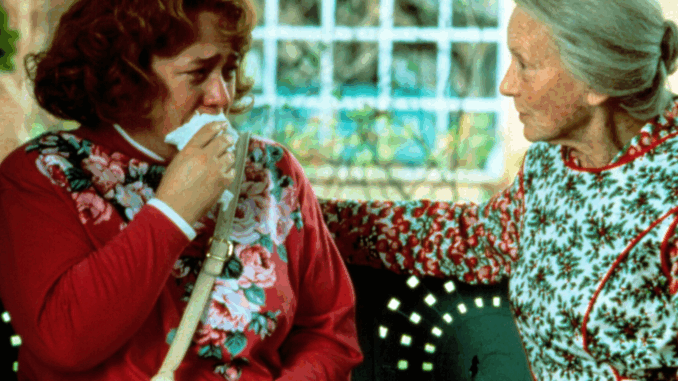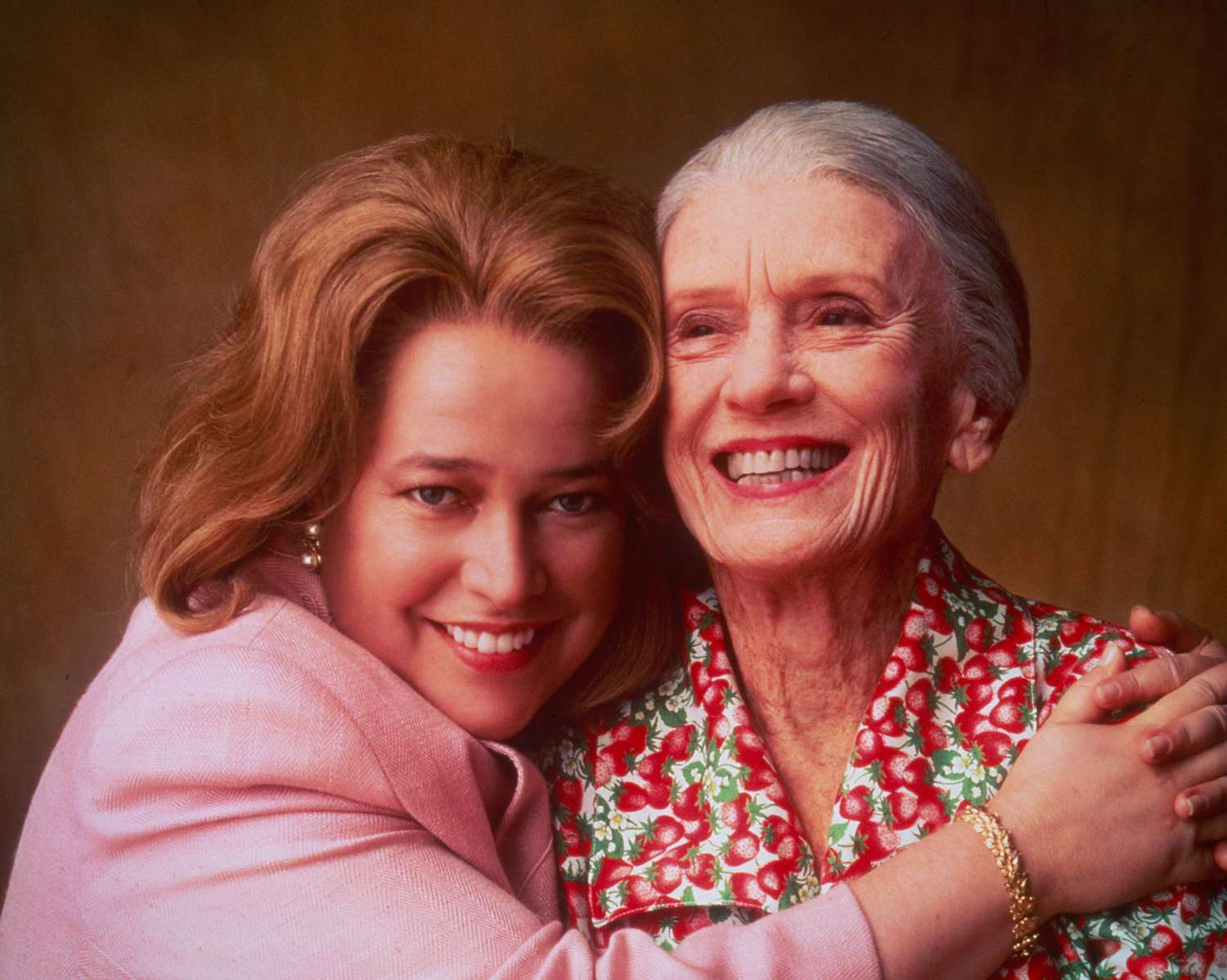
Ever paused mid-scene in a movie and felt a shift, like you’ve just flipped a page to a new world? That’s what happens in Fried Green Tomatoes when Evelyn visits the nursing home and listens to Ninny Threadgoode recount the story of Idgie and Ruth. It’s more than storytelling—it’s a bridge across time. In that scene — that quiet, charged moment — two eras collide: Evelyn’s present and Idgie’s storied past.
Let’s dive deep into that pivotal scene: Cảnh giữa hai thời đại – Evelyn nghe câu chuyện Idgie. I’ll walk you through how it’s crafted, why it resonates, what it reveals, and how it anchors the themes of memory, connection, and identity. Buckle up.
1. The Setting: Nursing Home, Tea, and Time
1.1 Evelyn in the Present Day
Evelyn Couch walks into the nursing home, carrying her pain, her regrets, her unease. She’s middle-aged, stuck, unsettled. Too many unanswered questions. That setting — sterile halls, quiet rooms, lost faces — mirrors her emotional state.
1.2 Ninny Threadgoode: Keeper of Stories
Ninny Threadgoode isn’t just a resident; she’s a keeper of the past. Her stories are her legacy. In that nursing home room, she becomes a medium between Evelyn’s life and a bygone era. The place, the objects, the soft sounds—they all create a portal.

2. A Scene of Listening: Power in Silence
2.1 The Quiet Before the Story
Before Ninny speaks, there’s silence. Evelyn waits. The camera lingers. That pause is a breath — it tells you: something important is coming. It forces the audience into presence, becoming active listeners.
2.2 The First Words: Opening the Door
When Ninny begins, she doesn’t start with drama. She starts small: a memory, a name, a moment. That slow opening draws Evelyn — and us — deeper. It’s like unlocking a door to that past, step by step.
3. Dual Time Layers: Then vs Now
3.1 Evelyn’s World vs Idgie’s Era
These two are distinct: Evelyn’s modern anxieties, her marriage issues, her self-doubt. Idgie’s era: a small southern town, racial tensions, social expectations, raw human connection. The storytelling draws the boundary, then slowly blurs it.
3.2 Narrative Framing: How Stories Span Generations
Ninny’s story is framed as past, but for Evelyn it becomes present. This technique—frame story, embedded narrative—lets the viewer sense that history isn’t dead. It’s alive in people’s hearts, in conversation, in memory.
4. Evelyn’s Emotional Arc: From Skeptic to Seeker
4.1 Initial Doubt
At the start, Evelyn listens halfheartedly. This is just “old stories,” she thinks. She’s got her own life to deal with. The camera shows her shifting, glancing—she’s not fully committed yet.
4.2 Growing Investment
As Ninny reveals more, Evelyn leans in. Her posture changes; her curiosity sharpens. She wants to see, to understand. In that crescendo, you sense her bridging to change.
5. Identity, Memory, and Legacy
5.1 Who Tells the Story Matters
Ninny telling Idgie’s tale frames it with perspective, with gaps, with emotion. It reminds us: history is personal. What’s remembered, emphasized, omitted—it shapes how we see others and ourselves.
5.2 Evelyn Reframing Her Past
As Ninny’s stories awaken Evelyn’s own needs, fears, courage, she begins to see possibilities: that she, too, has a story, a voice. The act of listening becomes a doorway to owning her identity.
6. Themes Unfolding Through Dialogue
6.1 Feminine Bonds Across Time
In that conversation, women link across generations: Ninny to Idgie to Ruth to Evelyn. They share pain, strength, love, survival. The scene underscores that sisterhood doesn’t require coevality — hearts connect across decades.
6.2 Resilience in the Face of Erasure
Much of what Ninny recounts is about silenced voices: those overlooked, marginalized, forgotten. Evelyn hears what mustn’t be lost. The scene posits that telling stories is an act of resistance.
7. Cinematic Tools: Lighting, Camera, Sound
7.1 Soft Focus, Close-ups, and Gaze
The camera often lingers on Evelyn’s face, her reactions. Close-ups on Ninny’s hands, her eyes. Soft focus blurs edges, as if merging past and present. It visually underscores the emotional proximity.
7.2 Ambient Sound & Silence
You’ll hear creaking floors, muted voices, the hush of the nursing home. When Ninny begins speaking, ambient noise falls away. Silence becomes weighty. This contrast makes the narrative voice more potent.
8. Moments Within Moments: Key Micro-Scenes
8.1 Ninny’s Hesitation Before a Memory
She pauses, eyes distant, as though crossing an inner border. That hesitation carries emotional heft — indicating trauma, longing, care in selection.
8.2 Evelyn’s Tears as She Listens
A subtle tear, a quiver in her lips — Evelyn feels more than she expected. It’s the moment the boundary breaks: she is no longer detached, she is invested, vulnerable.
9. Emotional Resonance: Why This Scene Hits Hard
9.1 Relatability of Listening
We’ve all been on both sides — the teller, the listener. That tension: wanting to share, wanting to understand. That universal human need surfaces here.
9.2 The Promise of Transformation
This scene is the hinge. After it, Evelyn’s world doesn’t stay the same. The promise emerges: maybe she can change, maybe she can find strength. That kind of hope — subtle, earned — resonates.
10. Contrast: Mundane Present vs Rich Past
10.1 Evelyn’s Routine Life
At home, her life feels stuck. Marital tensions, social expectations, inertia. It’s a world of small disappointments.
10.2 Idgie’s Vibrant Story
But in Ninny’s retelling: Idgie’s defiance, laughter, risk, heartache, love. It’s larger than life. The contrast sharpens the magic of storytelling: one life can carry so much.
11. Dialogue Excerpts & Their Power
11.1 “Time is the only thing that….”
Lines like these pull double duty. They reflect on mortality, memory, and the urgency to tell stories while we can.
11.2 Names, Places, Details
When Ninny names people, places, even food or weather, she grounds the past. Those details make the story tangible. Evelyn doesn’t just hear about an event — she smells it, sees it, steps inside it with her mind.
12. Character Convergence & Shift
12.1 Evelyn as a Proxy for the Audience
Evelyn’s skepticism, curiosity, emotional awakening mirror ours. Her reactions cue us on where to lean in. In many ways, we journey through her.
12.2 Ninny Becomes More Than a Narrator
By the end of the scene, Ninny is no longer just a storyteller — she’s guiding, urging, showing. She becomes the link, the mentor, the memory bearer. She shapes what Evelyn and we will carry forward.
13. How This Scene Advances the Film’s Arc
13.1 Setting the Stakes
After this conversation, we understand what’s at stake: love, memory, justice, connection. It frames why Idgie and Ruth’s story matters — not just historically, but personally to Evelyn.
13.2 Pacing and Momentum Shift
This moment accelerates the narrative. Evelyn’s arc begins anew. The film moves from present to past to integration. It’s the fulcrum.
14. Interpretations & Symbolism
14.1 Bridge Between Life and Legacy
Evelyn sitting with Ninny is a literal and figurative bridge. The nursing home room is the threshold. Beyond it lies Idgie’s life. Evelyn crosses that threshold in her mind.
14.2 The Gift of Oral Tradition
The scene honours oral storytelling: memory passed by voice. In a world of written archives, the film values what lives in humans, in sharing.
15. Why Audiences Still Return to This Moment
-
Emotional depth that transcends genre. The scene isn’t flashy yet leaves you changed.
-
A turning point for the protagonist. We feel we are witnessing inner alchemy.
-
A reminder that stories connect us. The past doesn’t stay dead — it breathes in listeners.
-
It speaks to identity, heritage, and empathy. In an era craving connection, it models how to truly listen.
Conclusion
That moment — Evelyn sitting across from Ninny, leaning in to hear Idgie’s story — feels small on the surface. Yet it’s seismic. It bends time, fuses eras, births transformation. It’s not just about what we hear — it’s about what we become when we finally let someone else’s story live inside us. In Fried Green Tomatoes, this scene reminds us: stories are not just echoes. They are living bridges, carrying hope, resistance, love across generations.
FAQs
1. Why is the Evelyn-Ninny storytelling scene so central to Fried Green Tomatoes?
Because it pivots the film — it transitions Evelyn from observer to participant, sets up the embedded narrative, and forges emotional investment in Idgie’s story.
2. How does the scene reflect the film’s theme of memory?
It shows memory as active, alive. It belongs to those who tell it and those who listen. The scene emphasizes that memory shapes identity and connection.
3. What filmmaking techniques make this scene effective?
Close-ups, soft focus, ambient silence, careful pacing, and performance subtleties (pauses, gaze shifts) all amplify emotional weight and blur time boundaries.
4. Can modern audiences still relate to Evelyn’s reaction?
Absolutely. Many people carry regrets, feel unseen, crave stories that open possibilities. Evelyn’s journey resonates across generations.
5. What lessons does this scene teach about listening and storytelling?
That listening is active and sacred. That stories hold power not just in telling but in passing. That through stories, the past lives on and carries us forward.
